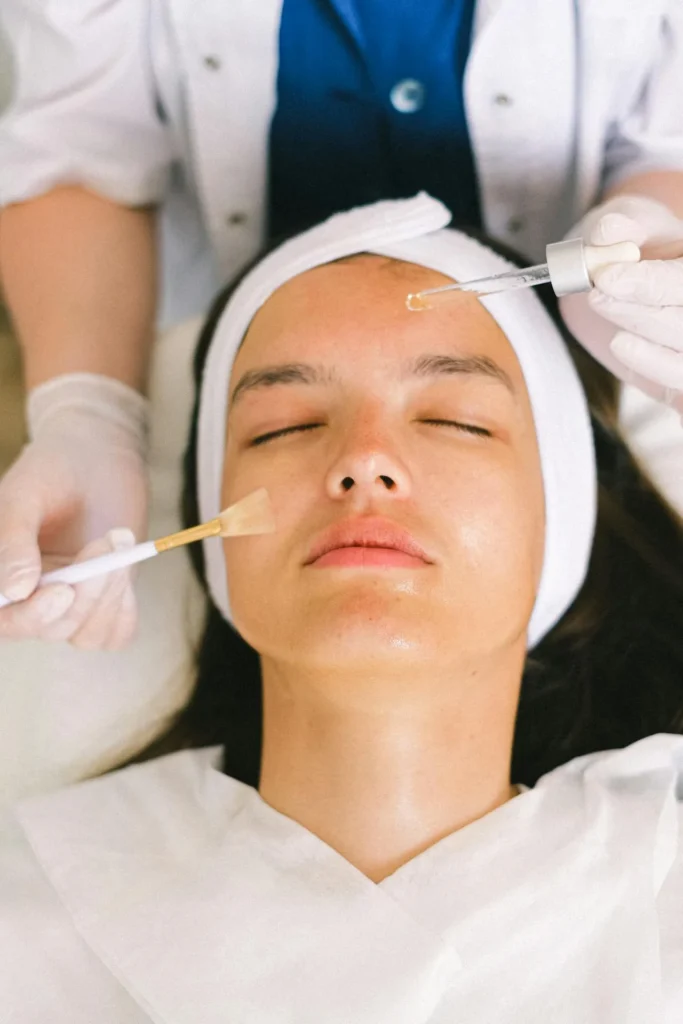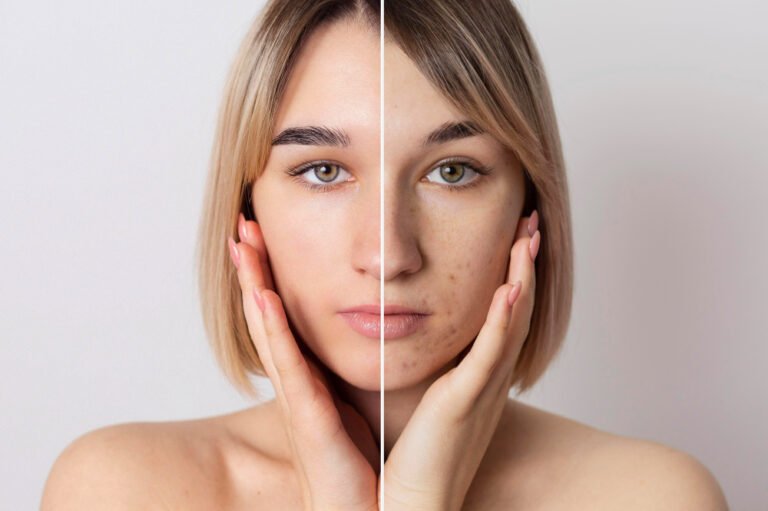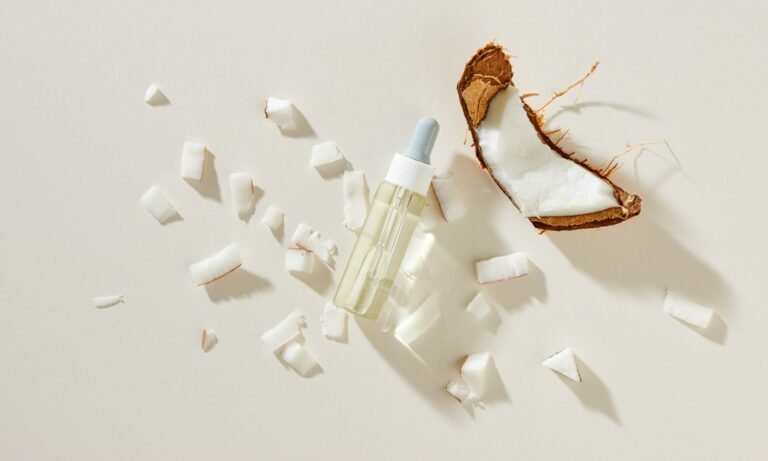Seasonal Skincare: Adapting Your Routine for Weather Changes
Your skin faces different challenges throughout the year, and what works in summer might leave you flaky in winter.
Weather changes affect your skin’s needs dramatically, making seasonal adjustments essential for maintaining healthy, glowing skin year-round.
You can master the art of adapting your routine with the right knowledge and products.
Understanding How Weather Affects Your Skin

Weather directly impacts your skin’s behavior and needs. Cold air holds less moisture, which means winter environments naturally dehydrate your skin.
You’ll notice increased dryness, flakiness, and sensitivity during colder months.
Summer brings its own set of challenges. Higher temperatures increase oil production, leading to shinier skin and potential breakouts.
UV radiation intensifies, requiring stronger protection measures. Humidity levels also play a crucial role in how your skin feels and functions.
Spring and fall serve as transition periods. Your skin adjusts from one extreme to another, often becoming unpredictable.
You might experience sudden breakouts, increased sensitivity, or unusual dryness as your skin adapts to changing conditions.
Indoor heating and air conditioning create additional complications. You’ll need to compensate for these environmental factors in your skincare routine.
These systems remove moisture from the air, creating desert-like conditions that strip your skin of natural hydration.
Spring Skincare: Renewal and Recovery
Spring marks the perfect time to refresh your skincare routine after winter’s harsh conditions.
Your skin begins recovering from cold-weather damage, but you need to support this natural renewal process actively.
Start by exfoliating away winter’s buildup of dead skin cells. Choose gentle chemical exfoliants like glycolic acid or lactic acid rather than harsh physical scrubs.
You’ll reveal fresher, brighter skin underneath while preparing for the increased sun exposure ahead.
Gradually lighten your moisturizer as temperatures rise. Winter’s heavy creams might feel too rich as humidity increases.
Switch to lighter formulations that still provide adequate hydration without overwhelming your skin.
Introduce vitamin C into your routine if you haven’t already. This powerful antioxidant helps repair winter damage while protecting against environmental stressors.
You’ll build resilience for the stronger UV exposure coming in summer months.
Don’t forget to address any sensitivity issues that developed during winter. Your skin barrier might need extra support through gentle, fragrance-free products.
Niacinamide works excellently for calming irritation and strengthening your skin’s protective barrier.
Summer Skincare: Protection and Hydration

Summer demands a complete shift in your skincare strategy. Sun protection becomes your top priority, but you can’t neglect hydration in the process.
High temperatures and increased outdoor activities require careful planning.
Upgrade your sunscreen game significantly. Choose broad-spectrum SPF 30 or higher and reapply every two hours.
You’ll need extra protection during peak sun hours between 10 AM and 4 PM. Consider tinted sunscreens that provide coverage while protecting your skin.
Switch to oil-free, lightweight moisturizers that won’t feel heavy in humidity. Gel-based formulations work exceptionally well for summer skincare.
You’ll maintain hydration without the greasy feeling that heavier creams can create.
Incorporate cooling ingredients into your routine. Aloe vera, cucumber, and hyaluronic acid provide soothing relief from heat and sun exposure.
These ingredients help calm inflammation while delivering essential moisture to your skin.
Address increased oil production with gentle, non-stripping cleansers.
Over-cleansing will trigger even more oil production, creating a frustrating cycle. You want to maintain your skin’s natural balance while managing excess shine.
Fall Skincare: Preparation and Repair
Fall serves as your skin’s preparation period for winter’s harsh conditions.
You’ll need to gradually transition from summer’s lightweight routine to more intensive hydration and repair strategies.
Begin increasing your moisturizer’s richness as temperatures drop. Your skin starts requiring more emollient ingredients to maintain its barrier function.
Ceramides, fatty acids, and cholesterol become essential components for healthy skin during this transition.
Address summer’s UV damage through targeted treatments. Retinoids work excellently for repairing sun damage and preventing premature aging.
Start slowly if you’re new to retinoids, as your skin needs time to adjust to these powerful ingredients. Continue using daily SPF to protect your skin year-round.
Focus on strengthening your skin barrier before winter arrives. You’ll thank yourself later when winter winds start blowing.
Products containing peptides, hyaluronic acid, and antioxidants help fortify your skin against upcoming environmental stressors.
Don’t abandon sun protection entirely, even as temperatures cool. UV rays remain strong during fall months, and snow reflection can intensify exposure.
Winter Skincare: Deep Moisture and Barrier Protection
Winter requires your most intensive skincare approach. Cold air, indoor heating, and harsh winds create the perfect storm for skin damage.
You’ll need to completely overhaul your routine to combat these challenging conditions.
Invest in rich, occlusive moisturizers that create a protective barrier on your skin. Look for ingredients like petrolatum, shear butter, and squalene.
These ingredients prevent moisture loss while providing essential hydration to compromised skin.
Consider adding facial oils to your routine. Rosehip, argon, and jojoba oils provide additional nourishment without clogging pores.
You can mix a few drops into your moisturizer or apply them as a final step in your evening routine.
Gentle cleansing becomes crucial during winter months. Harsh cleansers strip away natural oils that your skin desperately needs for protection.
Switch to cream or oil-based cleansers that remove impurities without compromising your skin barrier. Don’t forget about your lips and delicate eye area.
These areas lack oil glands and suffer significantly during winter. Use dedicated lip balms and eye creams to provide targeted protection for these vulnerable zones.
Year-Round Skincare Essentials

Certain skincare principles remain constant regardless of season. You’ll always need these fundamental elements in your routine, though their formulations might change with the weather.
Daily cleansing removes dirt, pollution, and product buildup that accumulates on your skin.
Choose gentle formulations that match your current skin needs. You might switch between gel cleansers in summer and cream cleansers in winter.
Moisturizing maintains your skin’s hydration levels and barrier function. The key lies in selecting appropriate formulations for current weather conditions.
Your skin always needs moisture, but delivery methods change seasonally. Choose formulations that work well under makeup and reapply throughout the day.
Sun protection remains essential every single day of the year. UV rays penetrate clouds and reflect off snow, making daily SPF non-negotiable.
Regular exfoliation removes dead skin cells and promotes cell turnover. Adjust frequency based on your skin’s current sensitivity levels.
You might exfoliate more frequently in summer and reduce frequency during sensitive winter months.
Common Seasonal Skincare Mistakes to Avoid
Many people make predictable mistakes when transitioning between seasons. You can avoid these pitfalls by understanding what not to do during seasonal changes.
Switching your entire routine overnight shocks your skin and can trigger reactions. Gradual transitions work much better for maintaining skin stability.
Introduce new products one at a time and monitor your skin’s response carefully. Adapt your routine to match environmental conditions for optimal results.
Using the same products year-round ignores your skin’s changing needs. You wouldn’t wear winter coats in summer, so why use winter skincare in July?
Neglecting sun protection during cooler months leaves your skin vulnerable to damage. UV rays remain strong even when temperatures drop.
Continue using daily SPF to protect against premature aging and skin cancer. Reduce exfoliation frequency until your skin adapts to new conditions.
Over-exfoliating during seasonal transitions can compromise your skin barrier. Your skin becomes more sensitive during weather changes, requiring gentler treatment.
Building Your Seasonal Skincare Routine
Creating an effective seasonal skincare routine requires planning and patience. You’ll need to understand your skin’s specific needs and respond accordingly throughout the year.
Start by identifying your skin type and primary concerns. Oily skin behaves differently than dry skin during seasonal changes.
You’ll need to tailor your approach based on your individual characteristics and sensitivities.
Keep a skincare journal to track how your skin responds to different products and weather conditions.
Note any reactions, improvements, or concerns that arise during seasonal transitions. This information helps you make better choices in future seasons.
Build a core routine that remains consistent year-round, then add seasonal boosters as needed.
Your basic cleanse-moisturize-protect routine stays constant while you adjust specific products and treatments for current conditions.
Invest in quality products that match your budget and lifestyle. You don’t need expensive products to achieve healthy skin, but you do need consistent, appropriate care.
Choose products you’ll actually use regularly rather than elaborate routines you’ll abandon.
Professional Guidance and Seasonal Treatments

Sometimes your skin needs professional attention during seasonal transitions.
Dermatologists and licensed estheticians can provide valuable guidance for complex skincare concerns.
Schedule professional treatments during appropriate seasons. Chemical peels work best during fall and winter when sun exposure decreases.
Laser treatments should also occur during cooler months to minimize complications.
Consider professional facials during seasonal transitions to help your skin adjust to changing conditions.
Estheticians can assess your current skin needs and recommend appropriate treatments for optimal health.
Don’t hesitate to consult dermatologists for persistent skin issues. Seasonal changes can trigger underlying conditions that require medical attention.
Professional guidance ensures you’re addressing problems correctly rather than making them worse.
Regular skin cancer screenings become especially important if you spend significant time outdoors.
Annual dermatology appointments help catch potential issues early while providing professional skincare recommendations.
Conclusion
Adapting your skincare routine seasonally ensures healthy, beautiful skin year-round.
Listen to your skin’s changing needs and adjust accordingly for optimal results.







